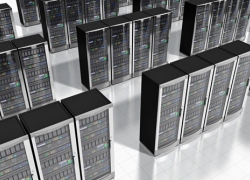How can real-time monitoring and DCIM give managers peace of mind?
How can real-time monitoring and DCIM give managers peace of mind?

The data center is a complicated ecosystem. When it comes to keeping an eye on the measurements that make up a computing facility, it helps to have all the information in one place so that IT managers can make informed decisions concerning potential investments (i.e., new cooling equipment or different power distribution units). Data center infrastructure management tools can provide the right kind of oversight for managers to utilize to their advantage within their facilities. These kinds of tools can also help operators better manage the stress of running a computing facility by providing actionable data in real time.
Here are four key reasons why DCIM tools can give data center managers peace of mind when it comes to keeping an eye on their facilities:
1. Become more efficient
In order to promote sustainability and become more energy efficient in the data center, it's important that IT managers have access to accurate statistics for the entire facility. FierceEnergy reported that in 2013, Navigant Research predicted that spending on DCIM software would grow to more than $4.5 billion worldwide by 2020 - and the reason for this expansion is partly due to the fact that DCIM helps support efficient practices.
"By enabling deep visibility into all aspects of a data center's operations, DCIM technology is opening tremendous opportunities for data centers to become more manageable and efficient," said Eric Woods, research director with Navigant Research.
Computing facilities generate a lot of data - and not just the kind managed by the server equipment. Room temperature, humidity, hot spots, power usage and server utilization are all measurements that can be taken with effective monitoring technology. By analyzing all of this data coming out of the computing facility, data center managers are in a better position to make crucial decisions about when to invest in new equipment and where to put it.
2. Save money
Keeping an eye on power requirements and cooling infrastructure in the data center doesn't just save managers operations headaches down the line. If a facility isn't utilizing energy effectively, that can cause a huge expense to the company in the short term.
According to TechTarget contributor Robert Gates, AOL recently got rid of a number of so-called "zombie servers" within its data centers. In fact, the company purged 14,805 servers that weren't doing any computing but were simply taking up space and using energy in the data center, saving AOL $10 million. The comatose equipment was possible to find by analyzing data from the server room floor.
3. Prevent disruptions
With DCIM tools, managers don't have to worry about looking at multiple streams of data from all the different areas of their facilities. Instead, they can view statistics for the entire facility from one central command center. This provides significant oversight that can be crucial to overcoming a potential outage before it happens.
Data Center Knowledge contributor Michael Potts stressed that DCIM can help enforce standard processes for data center operation. In other words, these software tools can help reduce or eliminate operator errors, which according to Potts can account for as much as 80 percent of system outages. Managers will sleep better at night knowing these repeatable processes aren't being modified without their knowledge.
4. Determine optimal server placement
Networked Enterprise contributor Michelle Amodio noted that DCIM helps managers decide how to organize the server room. By utilizing power, cooling and network data at the rack level, optimum placement of new servers can be determined more easily. This in turn leads to money saved due to more energy-efficient practices and disruption prevention.
The operations within the data center are all interconnected - and DCIM coupled with real-time monitoring can be the glue that keeps all the parts together. Investing in DCIM solutions like the ones offered by Geist can provide the real-time actionable data necessary to become more energy efficient, prevent a number of system outages in the data center and know how to ultimately organize the server room to get optimal functionality out of the computing equipment. All of these positive impacts can also have an effect on companies' checkbooks - by saving energy and preventing unwanted downtime, IT managers can reduce operational expenses.



